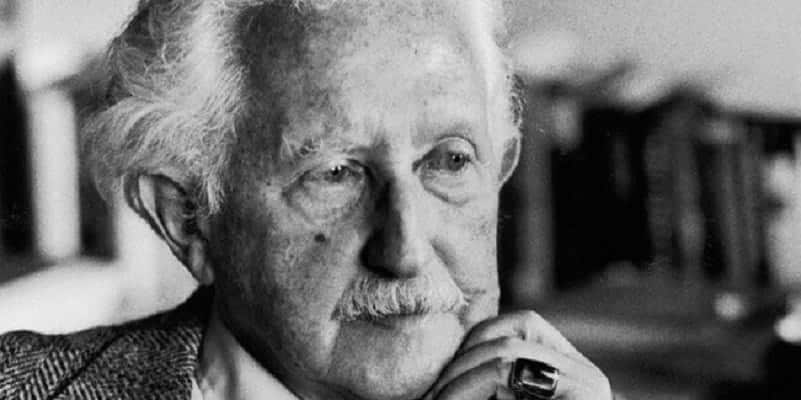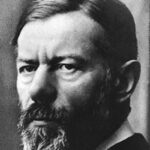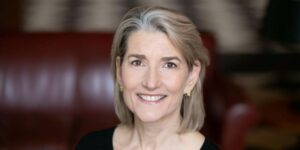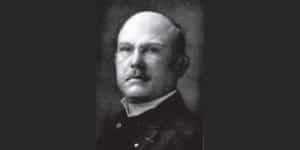Erik Erikson biography and theory

Erik Erikson (born June 15, 1902 – died May 12, 1994, in full Erik Homburger Erikson), was an American psychoanalyst known for his works on social psychology, individual identity, and psychology’s interactions with history, culture, and politics. Erik Erikson first developed and described the concept of an identity crisis.
Erik Erikson biography
Who is Erik Erikson?
Erik Erikson was born in Frankfurt, Germany. He was the son of Karla Abrahamsen and Waldemar Isidor Salomonsen, a Jewish stockbroker. He was born at the time when his mother just broke up with his biological father, of whom no information is available. Shortly after his birth, his mother moved with Erik to Karlsruhe. In Karlsruhe she became a nurse and married pediatrician Theodor Homburger.
In 1911 Erik Erikson was officially adopted by his stepfather Theodor Homburger and took his surname. He grew up not knowing who his biological father was, something that was kept from him. Erik Erikson struggled with his identity throughout his childhood because he felt that his stepfather did not fully accept him, like he did his own daughters.
The development of his identity thus seems to have been one of the biggest topics in Erik Erikson ‘s early life. This was later also central to his theoretical work. As an adult, he wrote about his identity confusion, as he called it. No child is going to develop a sense of 100% trust or 100% doubt; that’s impossible.
Erik Erikson described his state of being as between neurosis and adolescent psychosis. The daughter he would later have described that her father’s true psychoanalytic identity was not revealed until he replaced his last name with a name he had invented himself: Erikson.
Erik Erikson was a tall, blond, blue-eyed young man who had grown up in a Jewish environment. Because of this, he was often a target of bullying and bigotry, by both Jewish and non-Jewish children. At the so-called temple school, Erik Erikson was bullied for being Norwegian, while in high school he was bullied for being Jewish.
In his early childhood Erik lacked a general interest in school and therefore did not graduate from a university. He did develop an interest in art, history and languages. After graduating from high school, he therefore went to the art academy in Munich, and not to the medical university, as his stepfather would have liked.
He also did not quite find his place at the art academy and soon stopped. He started a long wander through Germany and Italy, together with his childhood friend Peter Blos. During his travels he sold paintings or sketches to people Erik Erikson met.
Eventually he realized that he would never become a real artist and moved back to Karlsruhe. Here he became an art teacher. During this time Erik Erikson was hired by families to teach drawing to their children. He worked well with children and in this way also met families who were close to Sigmund Freud and his daughter Anna.
During this period, he continued to grapple with questions about his identity, his biological father, and competing ideas about ethnic, religious, and communal identities. He befriended Anna Freud, who was also a psychoanalyst. Erik Erikson was invited by Anna in 1927 to teach art, history and geography at a private school in Vienna, Austria. He became interested in psychoanalysis and trained to become a psychoanalyst himself.
Erik Erikson focused mainly on child development and wrote his first research paper in 1930, just before completing his education. In 1933 he was elected a member of the Vienna Psychoanalytic Institute. That same year, he emigrated to the United States when the Nazis took over Germany.
He spent some time in Boston and held various positions at institutions such as Massachusetts General Hospital, Judge Baker Guidance Center and Harvard Medical School and Psychological Clinic.
In 1936 Erik Erikson joined Harvard University and worked at the Institute of Human Relations. He also studied a number of children at a Sioux reserve in South Dakota during that time. He left Harvard University in 1937 and began serving on the staff of California University. There he was affiliated with the Institute of Child Welfare and he also opened his own practice.
Erikson left the University of California and began teaching at the Austen Riggs Center. This was an important psychiatric treatment facility in Stockbridge. He spent a lot of time studying children from different environments and children of different races. His observations led to the famous book Childhood and Society. The book became an introduction to the world of the identity crisis.
He devised 8 developmental stages of people, each confronting the individual with other psychosocial demands. These continued into old age. Personality development, according to Erik Erikson, occurs through a series of crises that must be overcome and internalized by the individual in preparation for the next stage of development.
In the 1958 book Young Man Luther, Erik Erikson combined his interest in psychoanalytic theory and history in an investigation of Martin Luther to determine how he was able to break with an existing religious establishment to create a new way of seeing the world.
In 1960 Erik Erikson returned to Harvard University and became a professor of human development. He worked here until his retirement and, together with his wife, wrote several articles and books on topics related to psychology.
After the start of his retirement in 1970 Erik Erikson remained professor emeritus until his death.
Famous quotes
- “Hope is both the earliest and the most indispensable virtue inherent in the state of being alive. If life is to be sustained hope must remain, even where confidence is wounded, trust impaired.”
- “Healthy children will not fear life if their elders have integrity enough not to fear death.”
- “Anxieties are diffuse states of tension (caused by a loss of mutual regulation and a consequent upset in libidinal and aggressive controls) which magnify and even cause the illusion of an outer danger, without pointing to appropriate avenues of defense or mastery.”
- “Life doesn’t make any sense without interdependence. We need each other, and the sooner we learn that, the better for us all.”
- “Doubt is the brother of shame.”
- “We are what we love.”
- “We cannot leave history entirely to nonclinical observers and to professional historians.”
- “Babies control and bring up their families as much as they are controlled by them; in fact the family brings up baby by being brought up by him.”
- “The more you know yourself, the more patience you have for what you see in others.”
- “In the social jungle of human existence, there is no feeling of being alive without a sense of identity.”
- “You see a child play, and it is so close to seeing an artist paint, for in play a child says things without uttering a word. You can see how he solves his problems. You can also see what’s wrong. Young children, especially, have enormous creativity, and whatever’s in them rises to the surface in free play.”
- “Adolescents need freedom to choose, but not so much freedom that they cannot, in fact, make a choice.”
- “There is in every child at every stage a new miracle of vigorous unfolding.”
- “A creative man has no choice. He may come across his supreme task almost accidentally. But once the issue is joined, his task proves to be at the same time intimately related to his most personal conflicts, to his superior selective perception, and to the stubbornness of his one-way will; he must court sickness, failure, or insanity in order to test the alternative whether the established world will crush him, or whether he will disestablish a sector of this world’s outworn fundaments and make place for a new one.”
- “No man can claim that he is absolutely in the right or that a particular thing is wrong because he thinks so, but it is wrong for him so long as that is his deliberate judgment. It is therefore meet that he should not do that which he knows to be wrong, and suffer the consequence whatever it may be.”
- “And yet the sternness sometimes displayed in your letters to your children bespeaks an appalling sense of doom, as if they, as the product of your sin, had no chance for salvation except as partners in your renunciation.”
- “If some busybody were to cross-examine me on the chapters already written, he could probably shed much more light on them, and if it were a hostile critic’s cross-examination, he might even flatter himself for having shown up [make the world laugh by revealing] the hollowness of many of my pretensions.”
- “Nevertheless, it is true that the first discipline encountered by a young man is the one he must somehow identify with unless he chooses to remain unidentified in his years of need. The discipline he happens to encounter, however, may turn out to be poor ideological fare; poor in view of what, as an individual, he has not yet derived from his childhood problems, and poor in view of the irreversible decisions which begin to crowd in on him.”
- “An infant of two or three months will smile at even half a painted dummy face, if that half of the face is fully represented and has at least two clearly defined points or circles for eyes; more the infant does not need, but he will not smile for less. The infant’s instinctive smile seems to have exactly that purpose which is its crowning effect, namely, that the adult feels recognized, and in return expresses recognition in the form of loving and providing.”
- “None was to touch any one’s property on the way. They were to bear it patiently if any official or non-official European met them and abused or even flogged them. They were to allow themselves to be arrested if the police offered to arrest them.”
Publications and books by Erik Erikson
- 2017. The concept of identity in race relations. In Americans from Africa (pp. 323-348). Routledge.
- 1995. A way of looking at things: Selected papers, 1930-1980. W. W. Norton & Company.
- 1998. The life cycle completed (extended version). W. W. Norton & Company.
- 1994. Vital involvement in old age. W. W. Norton & Company.
- 1994. Identity and the life cycle. W. W. Norton & Company.
- 1994. Insight and responsibility. W. W. Norton & Company.
- 1993. Young man Luther: A study in psychoanalysis and history. W. W. Norton & Company.
- 1993. Gandhi’s truth: On the origins of militant nonviolence. W. W. Norton & Company.
- 1993. Childhood and society. WW Norton & Company.
- 1984. Reflections on the last stage—and the first. The psychoanalytic study of the child, 39(1), 155-165.Erikson, E. H. (1980). On the generational cycle an address. International Journal of Psycho-Analysis, 61, 213-223.
- 1980. Themes of work and love in adulthood. Harvard University Press.
- 1979. Dimensions of a new identity. WW Norton & Company.
- 1978. Adulthood. WW Norton & Company.
- 1977. Toys and reasons: Stages in the ritualization of experience. W. W. Norton & Company.
- 1976. Reflections on Dr. Borg’s life cycle. Daedalus, 1-28.
- 1970. Reflections on the dissent of contemporary youth. Daedalus, 154-176.
- 1970. Autobiographic notes on the identity crisis. Daedalus, 730-759.
- 1967. Eight ages of man. Klassiekers van de kinder-en jeugdpsychiatrie II, 258.
- 1966. D. ontogeny of ritualization: Ontogeny of ritualization in man. Philosophical Transactions of the Royal Society of London. Series B, Biological Sciences, 251(772), 337-349.
- 1966. Youth: Fidelity and diversity. In Conflict Resolution and World Education (pp. 39-57). Springer, Dordrecht.
- 1964. Inner and outer space: Reflections on womanhood. Daedalus, 582-606.
- 1962. Reality and Actuality an Address. Journal of the American Psychoanalytic Association, 10(3), 451-474.
- 1958. Young Man Luther: A Study in Psychoanalysis and History. W. W. Norton & Company.
- 1958. The nature of clinical evidence. Daedalus, 87(4), 65-87.
- 1956. The problem of ego identity. Journal of the American Psychoanalytic Association, 4(1), 56-121.
- 1954. The dream specimen of psychoanalysis. Journal of the American Psychoanalytic Association, 2(1), 5-56.
- 1950. Growth and crises of the” healthy personality.
- 1946. Ego development and historical change: Clinical notes. The psychoanalytic study of the child, 2(1), 359-396.
- 1942. Hitler’s imagery and German youth. Psychiatry, 5(4), 475-493.
How to cite this article:
Janse, B. (2022). Erik Erikson. Retrieved [insert date] from Toolshero: https://www.toolshero.com/toolsheroes/erik-erikson/
Original publication date: 07/11/2022 | Last update: 03/01/2023
Add a link to this page on your website:
<a href=”https://www.toolshero.com/toolsheroes/erik-erikson/”>Toolshero: Erik Erikson</a>











